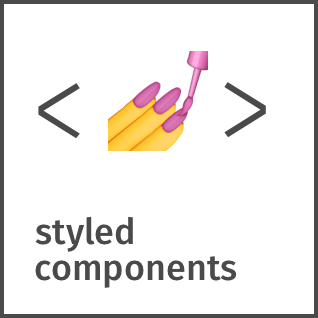Theming Support
- styled-components:
styled-components offers a ThemeProvider that allows you to define a theme for your application. You can easily access theme values in your styled components, promoting consistency and reusability of styles.
- emotion:
Emotion supports theming through its ThemeProvider, enabling you to define a theme object that can be accessed throughout your application. This allows for easy customization and consistent styling based on the theme.
- styled-system:
styled-system is designed with theming in mind, allowing you to create a design system that can be easily applied across your components. It provides a set of utility functions to help manage styles based on your theme.
- @shopify/restyle:
@shopify/restyle provides built-in theming capabilities that allow you to define a design system with consistent spacing, colors, and typography. This makes it easy to switch themes or apply a consistent style across your application.
Performance
- styled-components:
styled-components has a small runtime overhead but is generally performant for most applications. It supports server-side rendering, which can improve initial load times and SEO.
- emotion:
Emotion is known for its performance, utilizing a highly optimized runtime that minimizes the overhead of CSS-in-JS. It supports server-side rendering and critical CSS extraction, making it suitable for production applications.
- styled-system:
styled-system focuses on performance by providing utility functions that reduce the need for complex style calculations. It promotes a responsive design approach that can be efficiently managed.
- @shopify/restyle:
@shopify/restyle is optimized for performance in React Native applications, ensuring that styles are only recalculated when necessary, which helps maintain smooth animations and transitions.
Learning Curve
- styled-components:
styled-components is easy to learn for developers familiar with React. Its syntax is straightforward, allowing you to create styled components with minimal setup, making it accessible for beginners.
- emotion:
Emotion has a relatively easy learning curve, especially for developers already familiar with CSS and JavaScript. Its API is intuitive, and it provides clear documentation to help new users get started quickly.
- styled-system:
styled-system may have a steeper learning curve due to its utility-first approach and the need to understand design tokens and responsive design principles. However, once mastered, it can significantly speed up development.
- @shopify/restyle:
@shopify/restyle has a moderate learning curve, especially for developers familiar with React Native. Its API is straightforward, but understanding the design system concepts may take some time.
Flexibility
- styled-components:
styled-components is flexible in that it allows you to create styled components with dynamic styles based on props, enabling a high degree of customization while maintaining a clean component structure.
- emotion:
Emotion provides high flexibility with both styled components and the CSS prop, allowing developers to choose their preferred styling method. This dual approach caters to different coding styles and project requirements.
- styled-system:
styled-system is highly flexible, allowing you to create responsive styles using a utility-based approach. It enables rapid prototyping and can be easily integrated with other styling solutions.
- @shopify/restyle:
@shopify/restyle offers flexibility in styling components, allowing you to create responsive styles and easily switch between different design tokens based on your theme.
Integration
- styled-components:
styled-components is primarily for React applications and integrates well with the React ecosystem, making it easy to use alongside other libraries and tools.
- emotion:
Emotion can be used with any React application, making it versatile for both web and mobile projects. It integrates well with existing CSS frameworks and libraries.
- styled-system:
styled-system can be integrated with any React application and works well with styled-components and Emotion, allowing developers to leverage its utility-first approach alongside other styling methods.
- @shopify/restyle:
@shopify/restyle is specifically designed for React Native, making it a great choice for mobile applications. It integrates seamlessly with React Native components and APIs.





